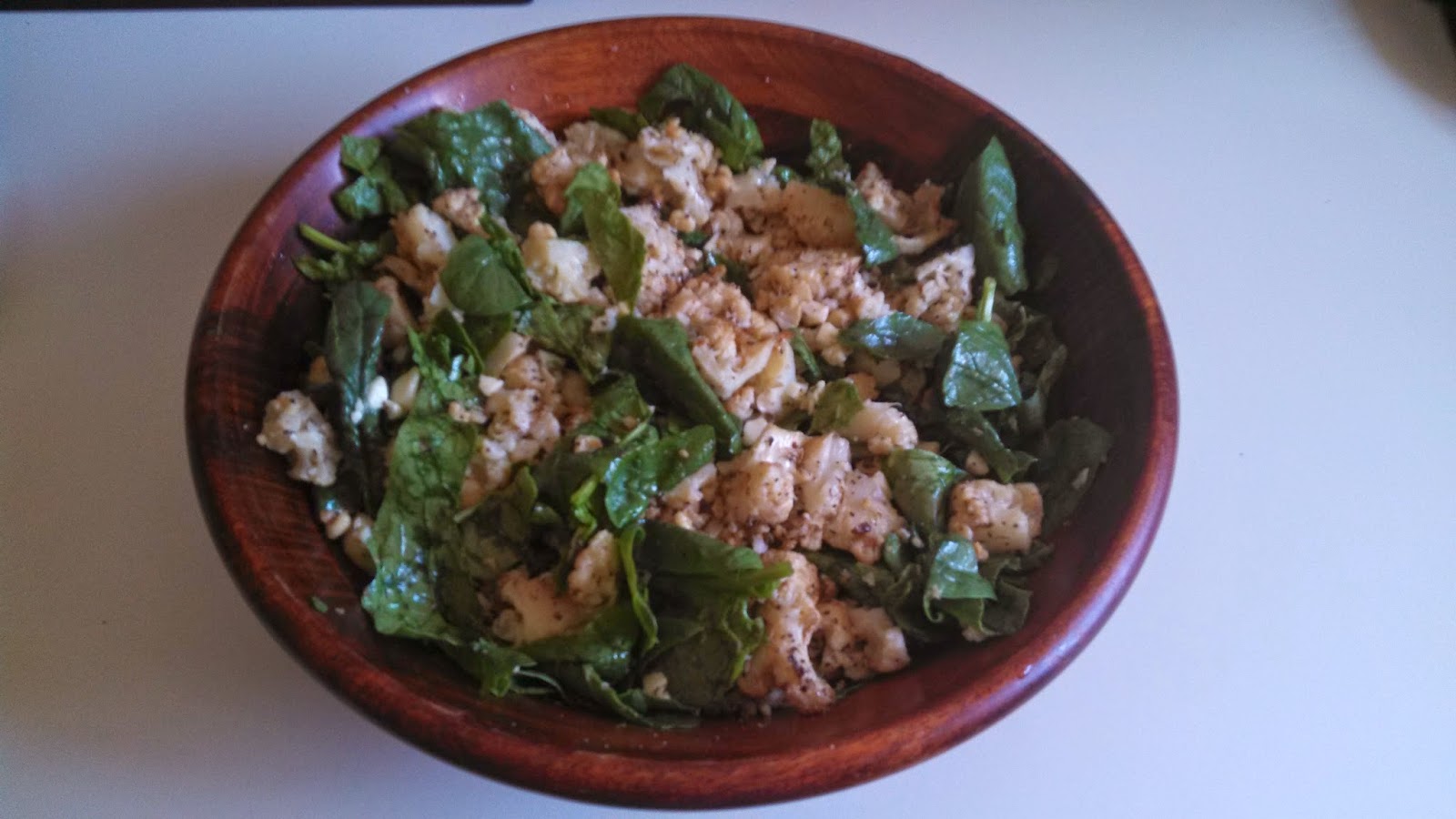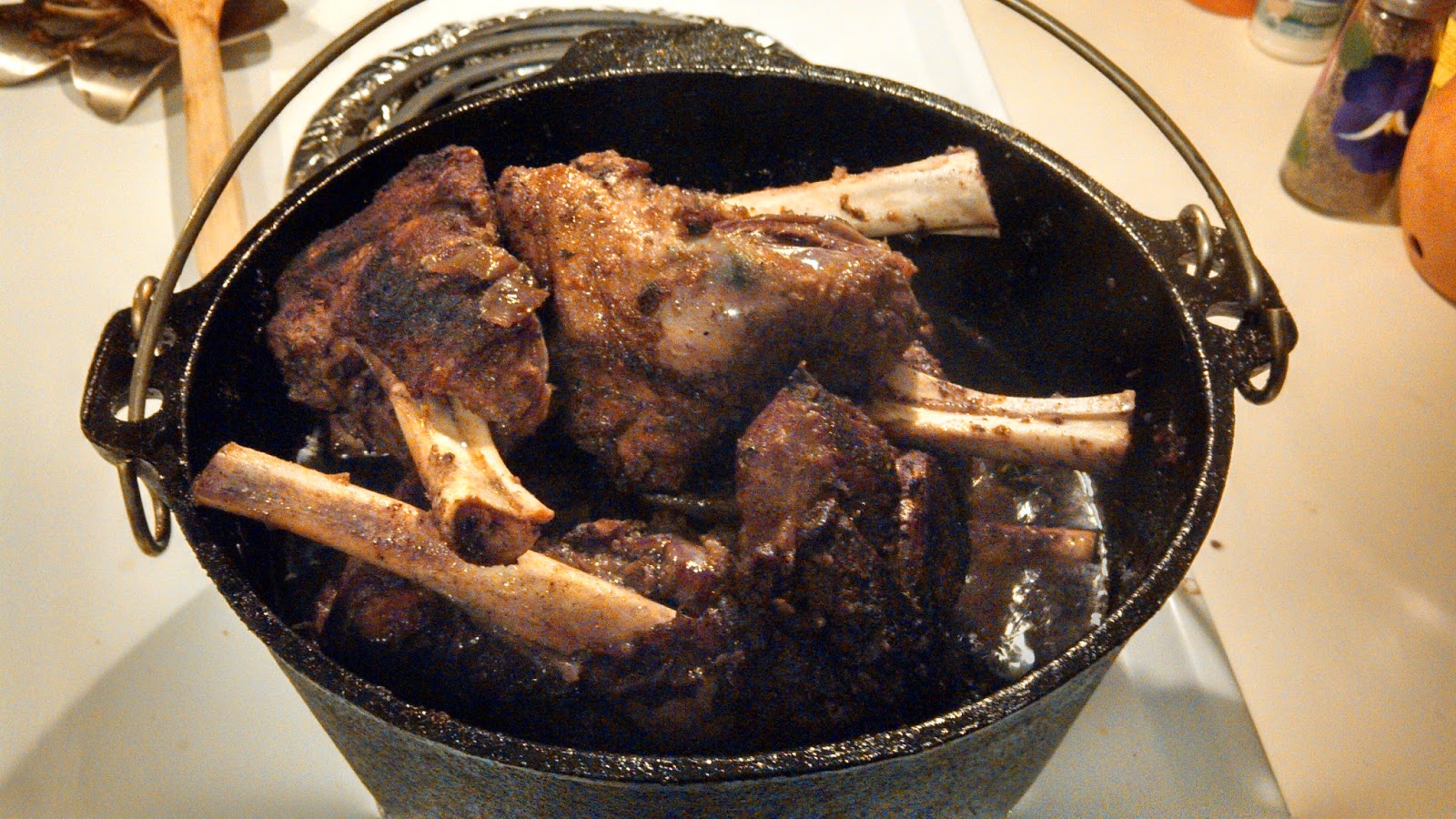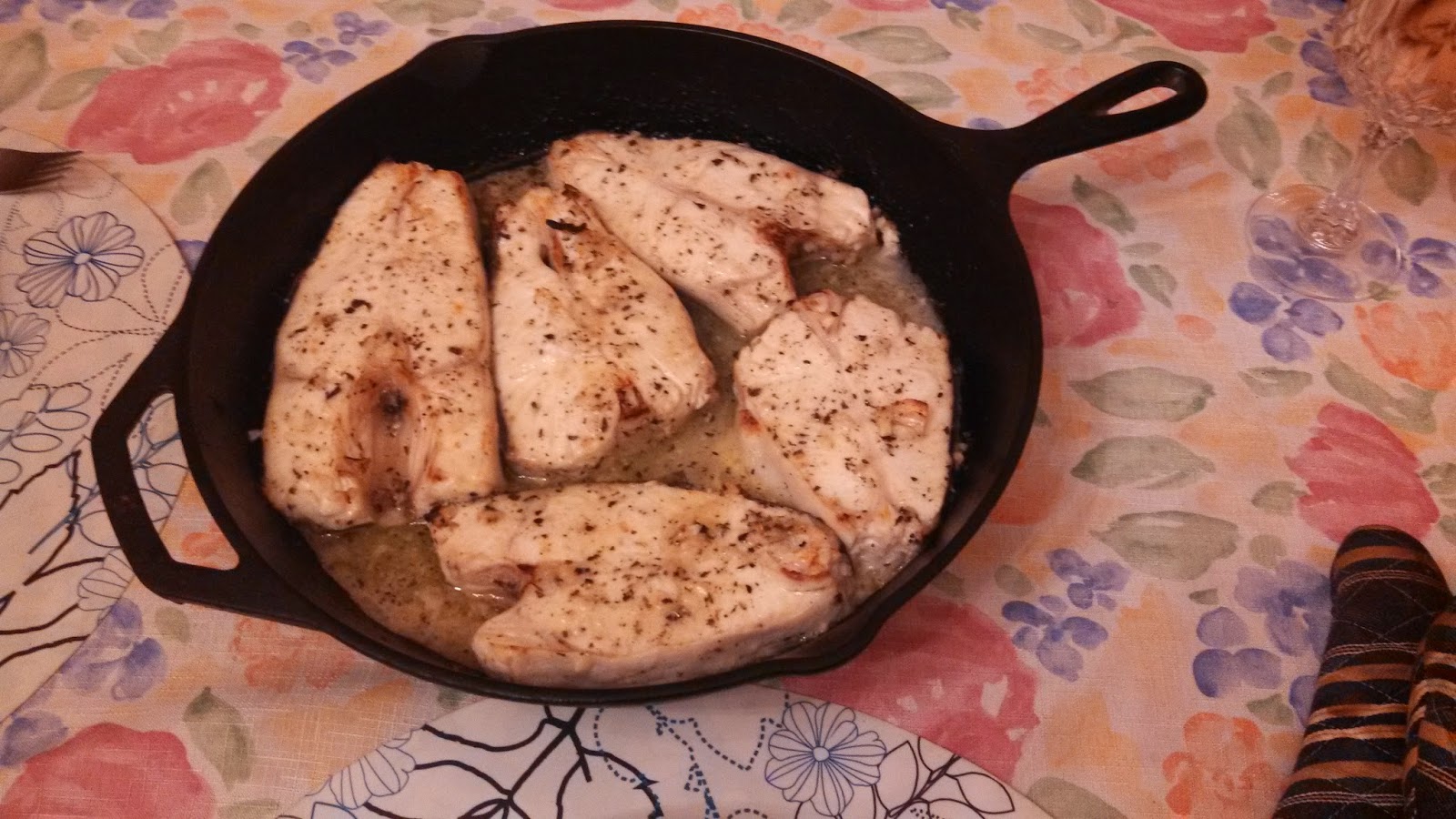I’m a salad guy. I love salads. And not just for summer. I like salads all year round. One of my fantasies is that someday I’ll find an eatery that just serves salads, all types, nothing else. If there is such a place, please let me know. In the interim, one of my favorite vegetables is cauliflower. Now, cauliflower, like broccoli is something you either love or hate, and I love both. Broccoli is fairly easy to deal with; you can fry it, sauté it, steam it, braise it, etc. But what about cauliflower? Other than quick boiling, what else is there? Well, there are various ways to prepare; but for a salad I prefer roasted cauliflower with whatever greens are available. I also happen to like spinach, just like Popeye. So here’s a salad that combines both. And it’s easy to make: just whisk up the vinaigrette dressing ingredients and pour over the roasted cauliflower. Nothing could be simpler, or more tasty.
SPINACH AND ROASTED CAULIFLOWER SALAD
1 large head cauliflower, broken into florets
3 tablespoons olive oil
Salt and freshly ground pepper to tatse
3 bunches spinach, washed and dried
2/3 cup grated Pecorino, Parmesan, or Gruyére cheese
For the Dressing:
3 tablespoons dry sherry or white wine
Salt and freshly ground pepper to taste
1 teaspoon dried oregano
2 cloves garlic, crushed
2 teaspoons mustard (preferably Dijon)
1/2 cup olive oil
1. Preheat oven to 400 degrees F.
2. In an oven proof dish, mix cauliflower with olive oil, salt and pepper. Place in oven and roast 35-40 minutes until cauliflower is tender and golden. Remove from oven, let cool, and cut into small pieces.
3. Meanwhile, while cauliflower is roasting, whisk all dressing ingredients in a small bowl or jar.
4. Place cauliflower in a salad bowl, pour dressing over it and toss. Serve with crusty bread.
Yield: 6-8 servings.



















